History is important for us today why? Because what happened in the past can happen again in the future.
As a young boy we celebrated BonFire Night with fire works and a Bonfire ( a large open air fire ) with fire works such as bangers,rockets, riffraffs and sparklers. And a big bonfire on an open field with the effigy of Guy Fawkes one of the gun powder plotters sitting on top of the BonFire.
Rather gruesome aspect of burning a human being at the stake. A wooden stake driven into the ground with firewood surrounding them. They were tied to the stake some times they had a bag of gunpowder tied to them to quicken their demise. Who did they burn at the stake so called witches conspiracists and treasonous people.
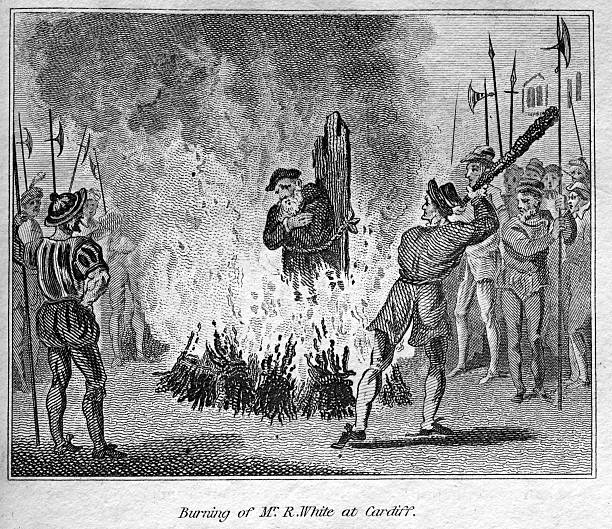
Vintage engraving from 1807 of showing Mr R White a protestant martyr being burned at the stake in Cardiff
But usually treasonous individual had much more gruesome ending than the stake! Being hung drawn and quartered. Utterly barbaric but they were barbaric times to think it was only 400 odd years ago.
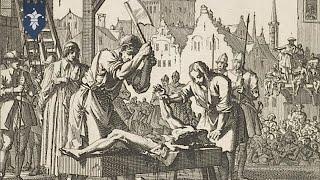
I thought as it was November 5 firework celebration I’d write a blog post about the original event and what drove some desperate catholic men to undertake the blowing up of houses of Parliament. Was it a true occurrence or a fabricated governmental conspiracy that the Houses of Parliament were under threat to be blown up by catholic zealouts? When I started to research the gunpowder plot it open up a tin of worms in fact a very gruesome tin at that!
We in the west live in a secular society meaning not connected with religious or spiritual matters. However as young soldier in the 1970’s and later in the early 1980’s when I lived in Northern Ireland I experienced a Sectarian ( divided )society full of hate and distrust. A society that was involved in a sectarian separation between Catholic and Protestants which undertook lots of atrocities against each other in the name of religion. Areas in Belfast had sectarian walls built to stop excursion’s of the Protestants and catholics into each other’s areas to stop or prevent them killing and maiming each other.
The orange men as they were called celebrated King William 111 the Dutch Prince of orange who became King of England, Scotland & Ireland for 12 years from 1689 to 1702. In Ireland he’s known as King Billy and in the Northern Ireland the Orange man or Protestant unionist still celebrate the battle of the Boyne against King James 11 of England & Ireland and as James V11 of Scotland. At the battle James was disposed of why? Because James was a Catholic and so was his Italian wife. The Protestants of England didn’t want a catholic “Stuart” King at head of the realm.
In the 1500’s and 1600’s religion ran through the fabric of English society it was deep rooted many ordinary folk were illiterate. Got their information by word of mouth and by the sermons of the priests or clergy of the time.
How did England and later Scotland become Protestant countries? We can blame one tyrant individual for that the King of England Henry Tudor. And the reformation of the Catholic Church by him due to his matrimonial problems with is first wife Catherine of Aragon Queen of England and the fault lines between him and the pope. Who was she how did she get involved with Henry V111? She was previously Princess of Wales as the wife of Henry’s elder brother, Arthur, Prince of Wales.
She was the daughter of Isabella I of Castile and Ferdinand II of Aragon, Catherine was three years old when she was betrothed to Prince Arthur, heir apparent to the English throne. They married in 1501, but Arthur died five months later. Catherine spent years in limbo, and during this time, she held the position of ambassador of the Aragonese crown to England in 1507, the first known female ambassador in European history.
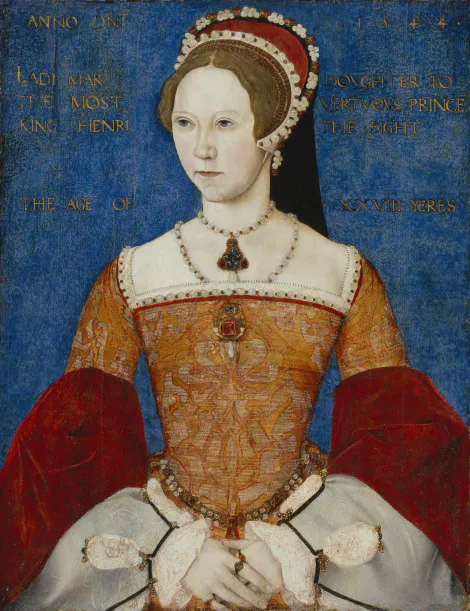
Catherine of Aragon was high born Spanish princess and had direct line of assent from English aristocracy. She was descended, on her maternal side, from the House of Lancaster, an English royal house; her great-grandmother Catherine of Lancaster, after whom she was named, and her great-great-grandmother Philippa of Lancaster were both daughters of John of Gaunt and granddaughters of Edward III of England. Consequently, she was third cousin of her father-in-law, Henry VII of England, and fourth cousin of her mother-in-law Elizabeth of York.
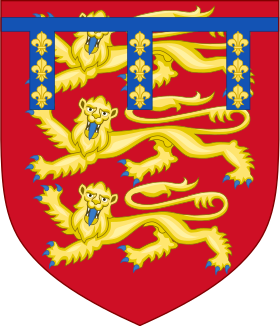
Reformation
Henry VIII was brought up a devout Catholic. Before he became king, he had in his possession a prayer scroll containing illuminations of the Trinity, the crucified Christ, the Instruments of the Passion and several martyred saints. Latin prayers were placed on each side of the images, together with English rubrics (instructions) that explained how the prayers could offer protection from earthly dangers or the remission of time in Purgatory.
Henry’s Catholic worship was typical of the era. Along with the prayer scroll, he also held fast to the belief that purchasing papal indulgences could pardon sin and shorten time in Purgatory; a popular practice at the time.
In 1521 he and Katherine of Aragon received a ‘plenary indulgence’ from Pope Clement VII, which was tied to them carrying out an annual pilgrimage to a major shrine. When Martin Luther’s protest against the sale of indulgences sparked off the German Reformation, Henry defended the practice in his rebuttal, ‘Defence of the Seven Sacraments’.
The prayers in these late-medieval sacred books and scrolls were often in Latin to signify that all Western Christians were part of the Roman Catholic Church. However, Henry formally broke with the Pope and the Roman Church after Pope Clement VII refused to grant him an annulment of his marriage to Katherine of Aragon so that he could wed Anne.
His appeal for an annulment was on the grounds that their union contravened the scriptures, citing Leviticus 20. 21, which prohibits a man from marrying his brother’s widow.
Katherine was a highly educated lady of the Spanish court She studied arithmetic, canon and civil law, classical literature, genealogy and heraldry, history, philosophy, religion, and theology. She had a strong religious upbringing and developed her Roman Catholic faith that would play a major role in later life.
She learned to speak, read and write in Castilian Spanish and Latin, and spoke French and Greek. Erasmus later said that Catherine “loved good literature which she had studied with success since childhood”.
She had been given lessons in domestic skills, such as cooking, embroidery, lace-making, needlepoint, sewing, spinning, and weaving and was also taught music, dancing, drawing, as well as being carefully educated in good manners and court etiquette.
Certainly a worthy suitor for a marriage to a Prince or a King. She was actually more high born than Henry the future king of England. Henry’s line was from an illegitimate connections so Catherine had greater standing to be Queen of England than Henry V111 himself? Maybe that always rankled him and she was such a highly intelligent lady of standing.
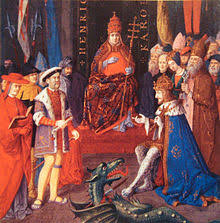
Catherine’s second wedding took place on 11 June 1509, seven years after Prince Arthur’s death. She married Henry VIII, who had only just acceded to the throne, in a private ceremony in the church of the Observant Friars outside Greenwich Palace. She was only 23 years of age.
On Saturday 23 June 1509, the traditional eve-of-coronation procession to Westminster was greeted by a large and enthusiastic crowd. As was the custom, the couple spent the night before their coronation at the Tower of London. On Midsummer’s Day, Sunday, 24 June 1509, Henry VIII and Catherine were anointed and crowned together by the Archbishop of Canterbury at a lavish ceremony at Westminster Abbey.
The coronation was followed by a banquet in Westminster Hall. Many new Knights of the Bath were created in honour of the coronation. In that month that followed, many social occasions presented the new Queen to the English public. She made a fine impression and was well received by the people of England
Catherine suffered with a number of miscarriage she bore a son Henry who died within a month of his birth then eventually her only child Mary who became Queen Mary 1 of England.
Catherine wasn’t able to have more children and Henry got bored with his wife and started to chase after Anne Boleyn one of her ladies in waiting.
Henry began to believe that his marriage was cursed and sought confirmation from the Bible, which he interpreted to say that if a man marries his brother’s wife, the couple will be childless.
Even if her marriage to Arthur had not been consummated (and Catherine would insist to her dying day that she had come to Henry’s bed a virgin), Henry’s interpretation of that biblical passage meant that their marriage had been wrong in the eyes of God.
Whether the pope at the time of Henry and Catherine’s marriage had the right to overrule Henry’s claimed scriptural impediment would become a hot topic in Henry’s campaign to wrest an annulment from the present Pope.
is possible that the idea of annulment had been suggested to Henry much earlier than this, and is highly probable that it was motivated by his desire for a son. Before Henry’s father ascended the throne, England was beset by civil warfare over rival claims to the English crown, and Henry may have wanted to avoid a similar uncertainty over the succession.
It soon became the one absorbing object of Henry’s desires to secure an annulment.[Catherine was defiant when it was suggested that she quietly retire to a nunnery, saying: “God never called me to a nunnery.
I am the King’s true and legitimate wife. He set his hopes upon an appeal to the Holy See, acting independently of Cardinal Thomas Wolsey, whom he told nothing of his plans. William Knight, the King’s secretary, was sent to Pope Clement VII to sue for an annulment, on the grounds that the dispensing bull of Pope Julius II was obtained by false pretenses.
As the pope was, at that time, the prisoner of Catherine’s nephew Emperor Charles V following the Sack of Rome in May 1527, Knight had difficulty in obtaining access to him. In the end, Henry’s envoy had to return without accomplishing much. Henry now had no choice but to put this great matter into the hands of Wolsey, who did all he could to secure a decision in Henry’s favour.
Wolsey went so far as to convene an ecclesiastical court in England with a representative of the pope presiding, and Henry and Catherine herself in attendance. The pope had no intention of allowing a decision to be reached in England, and his legate was recalled. (How far the pope was influenced by Charles V is difficult to say, but it is clear Henry saw that the pope was unlikely to annul his marriage to the emperor’s aunt. )
The Pope forbade Henry to marry again before a decision was given in Rome. Wolsey had failed and was dismissed from public office in 1529. Wolsey then began a secret plot to have Anne Boleyn forced into exile and began communicating with the pope to that end. When this was discovered, Henry ordered Wolsey’s arrest and, had he not been terminally ill and died in 1530, he might have been executed for treason.
A year later, Catherine was banished from court, and her old rooms were given to Anne Boleyn. Catherine wrote in a letter to Charles V in 1531:
My tribulations are so great, my life so disturbed by the plans daily invented to further the King’s wicked intention, the surprises which the King gives me, with certain persons of his council, are so mortal, and my treatment is what God knows, that it is enough to shorten ten lives, much more mine.
Until the end of her life, Catherine would refer to herself as Henry’s only lawful wedded wife and England’s only rightful queen, and her servants continued to address her as such. Henry refused her the right to any title but “Dowager Princess of Wales” in recognition of her position as his brother’s widow.
She was then finally transferred to Kimbolton Castle, where she confined herself to one room, which she left only to attend Mass, dressed only in the hair shirt of the Order of St. Francis, and fasted continuously. While she was permitted to receive occasional visitors, she was forbidden to see her daughter Mary.
They were also forbidden to communicate in writing, but sympathisers discreetly conveyed letters between the two. Henry offered both mother and daughter better quarters and permission to see each other if they would acknowledge Anne Boleyn as the new queen; both refused.
In late December 1535, sensing her death was near, Catherine made her will, and wrote to her nephew, the Emperor Charles V, asking him to protect her daughter. It has been claimed that she then penned one final letter to Henry:
My most dear lord, king and husband, the hour of my death now drawing on, the tender love I owe you forceth me, my case being such, to commend myself to you, and to put you in remembrance with a few words of the health and safeguard of your soul which you ought to prefer before all worldly matters, and before the care and pampering of your body, for the which you have cast me into many calamities and yourself into many troubles.
For my part, I pardon you everything, and I wish to devoutly pray God that He will pardon you also. For the rest, I commend unto you our daughter Mary, beseeching you to be a good father unto her, as I have heretofore desired. I entreat you also, on behalf of my maids, to give them marriage portions, which is not much, they being but three. For all my other servants I solicit the wages due them, and a year more, lest they be unprovided for. Lastly, I make this vow, that mine eyes desire you above all things.
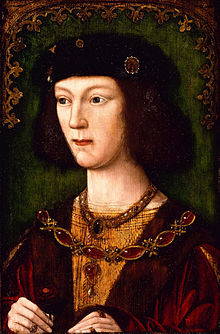
Rumours then circulated that Catherine had been poisoned by Anne or Henry, or both. The rumours were born after the apparent discovery during her embalming that there was a black growth on her heart that might have been caused by poisoning. Modern medical experts are in agreement that her heart’s discolouration was due not to poisoning, but to cancer, something which was not understood at the time.[
In her youth, Catherine was described as “the most beautiful creature in the world” and that there was “nothing lacking in her that the most beautiful girl should have”. Thomas More and Lord Herbert would reflect later in her lifetime that in regard to her appearance “there were few women who could compete with the Queen [Catherine] in her prime.
Paving the way for Protestantism
Henry VIII’s Reformation had begun an attack on sacred objects, such as saints’ relics and shrines. Some sacred texts were also defaced or destroyed, especially those which venerated popes or St Thomas Becket, who had stood up to King Henry II. Many manuscripts and books in monastic libraries were trashed or dispersed during the dissolutions, although the antiquarian John Leland managed to collect and conserve a large number for the king.
Despite this, sacred texts remained an important part of English religious culture. Indeed more of them began to appear in English, and of course several English Bibles came into circulation. However, for those who were evangelical or Protestants, the works contained no mention of purgatory and were not be handled as holy objects in themselves. The ground was being laid for the full-blown Protestantism introduced on Henry’s death by Archbishop Cranmer and Lord Protector Somerset.
Outcome of the English Reformation
The Protestant Church of England was thus established and the English monarch became its supreme head. Other consequences included the dissolution of the monasteries, the abolition of the Mass, the use of the English language in services and in the Bible used, the replacement of altars with communion tables, and a general doing away of the more decorative and showy elements of Catholicism both within services and the churches themselves.
The majority of people went along with the change, the rich because of the wealth they gained from the stripped-down Church, and the commoners because they deferred to the authorities and imposition of fines for not toeing the line and attending the new Anglican Church, as it became known. There were, too, objections from both Catholics and more radical Protestants such as the several Puritan groups who would go their own way and establish their own churches which adhered more closely to the thoughts expounded by such reformers as John Calvin (1509-1564 CE).
Thomas Cranmer, the Archbishop of Canterbury (1533-55 CE) formally annulled Henry’s first marriage in May 1533 CE. This annulment and Parliament’s passing of the Act of Succession (30 April 1534 CE) meant that Catherine’s daughter Mary was declared illegitimate. Henry was excommunicated by the Pope for his actions but by now the whole affair had taken on a significance far beyond royal marriages.
The Act of Supremacy was passed on 28 November 1534 CE which meant that Henry, and all subsequent English monarchs, only had one higher authority: God himself. The Treason Act of 1534 CE, pushed through Parliament by then first-minister, Thomas Cromwell, even forbade people to speak out and criticise their king or his policies.
The Reformation now really got into full swing with the bill of 1536 CE which saw the closure and abolishment of Catholic monasteries, known as the Dissolution of the Monasteries. The official excuse was that monasteries were no longer relevant, they were full of corrupt and immoral monks and nuns, and they did not help the poor as much as their wealth indicated they should.
Beginning with the smaller monasteries, Cromwell ensured the whole operation went smoothly by paying off senior monks, priors, and abbots with generous pensions. The estates of these smaller monasteries were redistributed to the Crown and Henry’s supporters, probably the prime motive for the bill. The process proved unstoppable even if there were some protests, notably the Pilgrimage of Graceuprising in 1536 CE.
The uprising involved some 40,000 protestors who notably took control of York but who also expressed common concerns regarding government and the economy, not only religious changes. The rebellion was peacefully disbanded but 200 ringleaders were later ruthlessly brought to justice.
By now the term ‘Protestantism’ came into widespread use for the first time. Iconography, murals, and pictorial stained glass windows were all removed from churches, and services were now conducted in English, not Latin. Catholic altars were replaced by communion tables. The worship of saints was discouraged.
Priests were now permitted to marry. Religious guilds were suppressed, endowments (chantries) were abolished for priests to sing mass for the souls of the dead, and church lands were confiscated. The riches gained often went straight into the pockets of the nobility.
There were protests, just like there had been over the Dissolution of the Monasteries. Again, the mix of a poor economic situation for many and resentment at changes in traditional parish life led to a rebellion, this time in Cornwall and then Norfolk in 1549 CE.
The latter, known as the Kett Rebellion after its leader Robert Kett, was the more serious but was quashed without pity by a massacre of rebels at Dussindale in August. The Reformation was pursued relentlessly with more ‘Popish’ practices being banned such as eliminating the more garish elements of clergy’s vestments and the abolition of prayers for the dead.
In 1553 CE Edward VI died tuberculosis aged just 15 and he was succeeded by his half-sister Mary I of England (r. 1553-1558 CE). A brief attempt to put Edward’s Protestant cousin Lady Jane Grey (1537-1554 CE) on the throne was a disaster for everyone involved. Mary was a strict Catholic and she set about reversing the Reformation.
The First Act of Repeal in October 1553 CE reversed all the religious-aimed legislation of Edward VI. Then the Second Act of Repeal of January 1555 CE abolished all post-1529 CE legislation concerning religious matters. This legislation had included the Act of Supremacy and so finally the Pope was back officially as head of the Church in England.
The queen’s name ‘Bloody Mary’ derives from the 287 Protestant martyrs who were burned at the stake during her reign, including Thomas Cranmer in March 1556 CE. Again, ordinary folks were none too bothered about these ecclesiastical changes but her nobles certainly were as they had gained enormous wealth from such policies as the Dissolution of the Monasteries.
Another problem was Mary’s proposed and then actual marriage to the Catholic Prince Philip of Spain (l. 1527-1598 CE). Many feared England would become absorbed into the immensely rich and powerful Spanish Empire and this feeling found expression in the Wyatt Rebellion in Kent in January 1554 CE.
The Reformation and feelings of English nationalism were becoming intertwined. The protestors wanted to stop the ‘Spanish Marriage’ but perhaps secretly they intended to replace Mary with her Protestant half-sister Elizabeth. As it turned out, Mary was struck down with cancer and the Reformation was only halted. Mary’s successor would ensure it was rebooted, and this time taken to its full conclusion.

Elizabeth I & Further Reforms
In 1558 CE Mary was succeeded by her half-sister Elizabeth I of England (r. 1558-1603 CE). Protestant Elizabeth set about returning the Church of England to its reformed state as it had been under Edward VI. Hard-line Protestants and Catholics, though, were both dissatisfied with Elizabeth’s pragmatic stance as she went for a more middle-of-the-road approach which appealed to the largely indifferent majority of her subjects.
Extremists were largely permitted to pursue their beliefs without interference, even if the Pope excommunicated the queen for heresy in February 1570 CE. Elizabeth was also active abroad. She attempted to impose Protestantism in Catholic Ireland, but this only resulted in frequent rebellions (1569-73, 1579-83, and 1595-8 CE) which were often materially supported by Spain. The queen also sent money and arms to the Huguenots in France and financial aid to Protestants in the Netherlands.
Two external threats to Elizabeth and Protestantism were Mary, Queen Scots (r. 1542-1567 CE) and Philip II of Spain. Catholic Mary had fled Scotland and had a claim to the English throne as she was the granddaughter of Margaret Tudor, sister of Henry VIII. Philip II was the most powerful Catholic ruler in Europe and seemed intent on expanding the Spanish Empire.
Both of these monarchs became the figureheads for Catholics in England eager to topple Elizabeth and Protestantism. For many Catholics, Elizabeth was illegitimate as they did not recognise her father’s divorce from his first wife Catherine of Aragon.
For this reason, Mary was kept under house arrest and, when found definitely guilty of plotting against Elizabeth, was executed on 8 February 1587 CE. Philip was then dealt a serious blow to his imperial ambitions by the defeat of the Spanish Armada that attempted to invade England in 1588 CE.
The Elizabethan Settlement
The next jump forward for the Reformation was the Elizabethan Settlement, a collection of laws and decisions introduced between 1558-63 CE. The Act of Supremacy (April 1559 CE) put the English monarch back as the head of the Church.
The queen had compromised a little on the wording, calling herself the ‘Supreme Governor’ of the Church instead of the ‘Supreme Head’, thus making her more acceptable to Protestants who disliked the idea of a woman in that position.
Unlike in other Protestant states, the old Catholic structure of the Church below the sovereign was maintained with the bishops organised in a hierarchy and appointed by the monarch.
The May 1559 CE Act of Uniformity set out the appearance of churches and services. Church attendance was made compulsory and failure to do so resulted in a small fine (which was then given to the poor).
Anyone refusing to attend Anglican services was known as a recusant. Secondly, attendance of a Catholic mass was forbidden and those found guilty of this offence received a large fine. A priest found guilty of performing a mass could face the death penalty.
The Royal Injunctions was a set of 57 regulations on Church matters, for example, preachers now required a license, every Church had to have an English language Bible, and pilgrimages were banned.
Thomas Cranmer’s Book of Common Prayer was reinstated (a compromise blend of the ’49 and ’52 versions). Crucially, the Prayer Book dealt with the bread and wine of the communion service.
Instead of treating these objects as being transformed into the body and blood of Jesus Christ when blessed by a Catholic priest, the Protestant preacher merely encouraged the believer to take them as a reminder of Christ’s sacrifice. Finally, the 1563 CE Thirty-Nine Articles (enacted in law in 1571 CE) attempted to definitively define English Protestantism, now otherwise known as Anglicism.
A Fragmented Church
There was opposition to the moderate features of the Settlement from both radical Catholics and radical Protestants, especially the more literal adherents of Calvinism as expounded by the French reformer John Calvin. This latter group of radicals were known as the Puritans and, believing in the importance of faith over living a ‘good’ life in order to reach spiritual salvation, they were prevalent from the mid-1560s CE.
Some Puritans – notably the Presbyterians and Separatists – wanted to abolish the Church hierarchy and focus on a more literal interpretation of the Bible; they would eventually create their own separatist churches which they considered independent of any royal authority or the Anglican Church.
While many people were either pro-Catholic or pro-Protestant, and some held varying degrees of radical views at either end of the spectrum, it is likely that many more people were content enough in the moderate middle ground which Anglicism represented. Many worshippers, for example, were attracted to elements from both sides such as admiring the beautiful ornamentation of a gold crucifix yet favouring the use of English in services.
There was then a degree of toleration and, as the queen herself stated, private thoughts remained private, for she would “open windows into no man’s soul” (Woodward, 171). There was a turnover of officials as Elizabeth removed remaining pro-Catholic bishops and, under the 1559 CE Act of Exchange, confiscated their estates (or threatened to if they did not toe the line).
Some 400 priests did resign as a consequence of the Elizabethan Settlement. It is also true that many preachers simply carried on as before, either in secret or hoping not to be noticed by the authorities – who in some cases were sympathetic at a local level. Now, though, the Reformation was irreversible.
Despite the stronger reactions, and considering the changes made and the violence witnessed in some other European countries that experienced their own Reformations, England had overcome a difficult and potentially dangerous hurdle and successfully established its own unique and lasting brand of Protestantism.
That was a long preamble of religious upheaval caused by the reign of the house of Tudor. Elizabeth being the last of Tudors of that dynasty. It was constant tug of war between Catholicism and Protestantism in England and Scotland. Mary Queen of Scots a Catholic was interned for 17 years and eventually executed on another trumped up charge and conspiracy of intrigue.
After Elizabeth it was the turn of the Stuarts reign. The Stuarts were the first kings of the United Kingdom. King James VI of Scotland became also King James I of England, thus combining the two thrones for the first time.
The Stuart dynasty reigned in England and Scotland from 1603 to 1714, a period which saw a flourishing Court culture but also much upheaval and instability, of plague, fire and war.
It was an age of intense religious debate and radical politics. Both contributed to a bloody civil war in the mid-seventeenth century between Crown and Parliament (the Cavaliers and the Roundheads), resulting in a parliamentary victory for Oliver Cromwell and the dramatic execution of King Charles I.
James 1 himself was fairly tolerant in terms of religious faith, but the Gunpowder Plot (an attempt by Guy Fawkes and other Roman Catholic conspirators to blow up the Houses of Parliament) in 1605 resulted in the reimposition of strict penalties on Roman Catholics.
Who were the gun powder plotters?
Background to Gunpowder Plot
When King James I began his reign, English Catholics had hoped that the persecution felt for over 45 years under his predecessor Queen Elizabeth would finally end. Though more tolerant than others before him, James was still faced with plots and schemes by priests and rebels trying to end the mistreatment of Catholics through force. To please the Protestants, who were distressed over the growing strength of the Catholic religion, James proclaimed his detestation for Catholics in England.Once again priests were expelled, fines were taxed, and Catholics went back to living a hidden life, but some Catholics were not so accepting of the secretive nature in which they had to practise their faith.
William Parker, 13th Baron Morley, 4th Baron Monteagle (1575 – 1 July 1622), was an English peer, best known for his role in the discovery of the Gunpowder Plot. In 1605 Parker was due to attend the opening of Parliament. He was a member of the House of Lords as Lord Monteagle, the title on his mother’s side. He received a letter; it appears that someone, presumably a fellow Catholic, was afraid he would be blown up. Who was this anonymous Catholic was it really a Catholic plotter or was it governmental conspiracy to use the gunpowder plotters as a gruesome example for future Catholic uprisings against the Protestant rulers of England & Scotland. The anonymous letter;
My lord, out of the love I have for some of your friends, I want to make sure you are safe. Because of this I would advise you to not attend this sitting of parliament because God and man have agreed to punish the wickedness of this time. Do not think this is a joke, go to your estate in the country where you will be safe, because although there is no sign of any problem yet, this parliament will receive a terrible blow, but they will not see who it is that hurts them. This advice should not be ignored as it may do you some good, and it can do you no harm because the danger will have passed as soon as you have burned this letter. I hope God grants you the grace to make good use of it, and that he protects you.
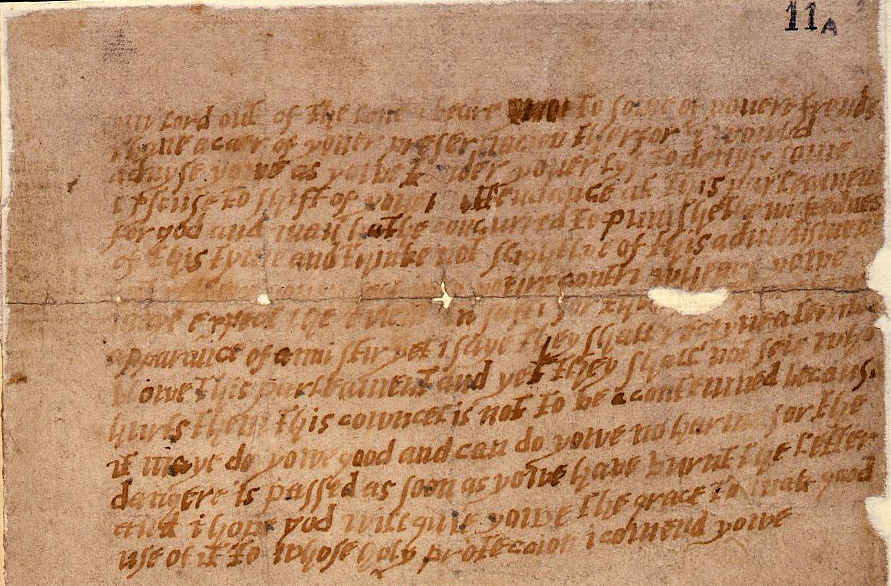
The Anonymous Letter To Lord Monteagle
Evidently the ring leader of the gunpowder plot was Robert Catesby. Born in Warwickshire, Catesby was educated in Oxford. His family were prominent recusant Catholics, and presumably to avoid swearing the Oath of Supremacy he left college before taking his degree. He married a Protestant in 1593 and fathered two children, one of whom survived birth and was baptised in a Protestant church. In 1601 he took part in the Essex Rebellion but was captured and fined, after which he sold his estate at Chastleton.
Catesby therefore planned to kill James 1 by blowing up the House of Lords with gunpowder during the State Opening of Parliament, the prelude to a popular revolt during which a Catholic monarch would be restored to the English throne. But was this really a genuine coup d’état meaning; French for ‘stroke of state’), also known as a coup or overthrow, is a seizure and removal of a government and its powers.
How many plotters were involved in this Coup d’etat? Not many and they were all catholics no Protestant gunpowder plotters? The coup conspirers were a small band of men; Thomas Wintour, John Wright, Thomas Percy, Robert Keyes, Thomas Bates, John Grant, Ambrose Rookwood, Sir Everard Digby, Francis Tresham and the infamous Guy Fawkes. All led by a handsome swashbuckling Catholic leader Robert Catesby. All rather neat and tidy for a unscrupulous government with spies and informers was the whole conspiracy a complete fabricated hoax? To have Catholicism put down for good with completely gruesome demise of its gunpowder plotters.
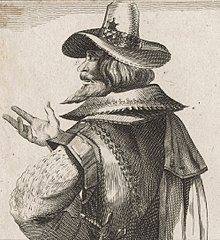
Who were the government agents who with this strange anonymous letter unmasked the plot and the traitors of the Protestant course?
10 men to undertake Coup d etat? Plus it’s leader really seriously? To put a Catholic King back on the throne of England? Surely an overthrow of any government and killing of the king would be pointless unless you had military force to back up the insurrection? Catholic army or volunteers who could take control over key establishments fight off the Protestant military. Successful Coup d etat are usually undertaken by military men who have a military force to overthrow a regime. Like minded band of brothers be it military, political or religious leanings. Let’s look at two recent military takeover of history General Franco of Spain who fought against the socialist or communist forces situated in Catalonia.
Fidel Castro who overthrow the Cuban Batista’s forces from the Sierra Maestra. After Batista’s overthrow in 1959, Castro assumed military and political power as Cuba’s prime minister. These were both armed uprisings not desperate handful of men. To overthrow a government you need a armed force to take advantage of the mayhem of the assassination of a King and his government.
No way did the gunpowder plotters have an extensive armed force of catholics willing to take up arms against the Protestant forces after the kings death. This is why I feel the whole gunpowder plot was a contrived ploy of the Protestant hierarchy of England. To use the so called plotters as scapegoats to enact a gruesome retribution upon them to frighten off would be catholic uprising again in the future.
As you can see from the Cuban revolution you have “yes” to blow up the Parliament and kill the King and his sibling Prince of Wales and then undertake an armed rebellion. This isn’t what happened with gunpowder plotters. They were either killed in the skirmish at Holbeach house in Staffordshire and the others plotters were tortured to extract false confessions then dragged away to their deaths after being tortured for false confessions and for the government to enact a spectacle of gruesome barbarity as warning to other insurrections this is what you’ll get from the Protestant hierarchy! I believe thus was a contrived piece of governmental theatre.
With coup d etat it’s essential to cause maximin confusion and fear. You’re in the process of destabilising the establishment. Hence taking over all channels of media radio and TV. Which the gunpowder plotters didn’t need to consider in 1605. Controlling energy and power grids destabilising military and police basically causing chaos. Preventing all lines of communication internet cellular telephones systems using propaganda to unsettle the populace.
Getting persecuted religious sects workers on your side the boogeymen are the exiting standing government. This certainly wasn’t in the gunpowder arsenal when it came to overthrowing the Protestant king James and House of Commons and the lords. Coup d’états are not very violent state of affairs like revolutions but certainly not carried out by a lone small band of gunpowder plotters either? Like Catesby and his cohorts of Catholic conspirers. This was the greatest exercise in early medieval propaganda !
https://mirror.explodie.org/108765924-Luttwak-1969-Coup-d-Etat.pdf